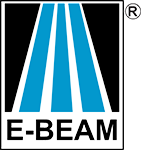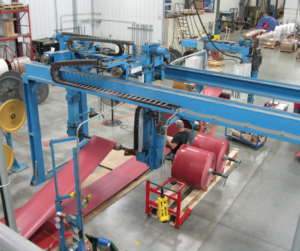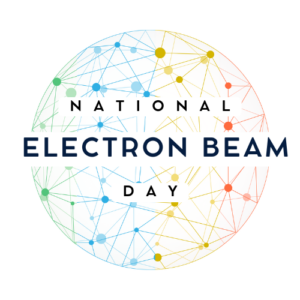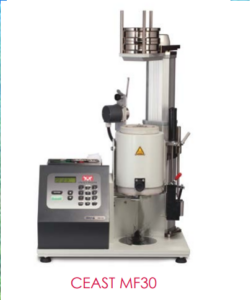[embedyt] https://www.youtube.com/watch?v=l21KOGlLNtE[/embedyt]
Join the E-BEAM Tech Services duo of Olivia Radcliffe and Dr. Gustavo Varca as they discuss e-beam bioreduction and food processing.
(TL;DR: E-beam technology can be used to sterilize or bioreduce food products such as beef and fresh produce. At E-BEAM Services, we don’t process fresh foods, but we do process some food products such as spices. Bioreduction essentially delivers a sterilization-level dose for product that does not need to be labeled as “sterile.” E-beam bioreduction is a good fit for food products because it offers fast turnaround time and a quick dose rate so as to minimize degradation to important qualities such as taste and smell.)
Olivia: Alright! Hey everyone, I’m Olivia Radcliffe. I’m the Marketing and Technical Services Specialist here at E-BEAM Services. That is Nola sleeping behind me. She will snore. We’ll see how much it gets picked up on the mic. Hopefully, Gustavo won’t be snoring. So I’ll let you can give your spiel about who you are, what you do for E-BEAM.
Gustavo: Hello everyone. I’m Dr. Varca also known as Dr. V and I’m here to talk to you guys a little bit about some questions that have come up to us. I am the New Application Development Manager at E-BEAM Services. And I’m a radiation technology scientist and specialist. So I’m here to try to answer a couple of questions.
Olivia: So lately we’ve actually been getting some questions about food processing in particular. And I want to start off by pointing out that at E-BEAM Services, we don’t actually process food products like beef or fresh produce, mangoes, lettuce, things like that, that other e-beam facilities might process. That could be their specialty. That’s not something we choose to process.
But we do process other food-type products like spices and things like that. So I might’ve just stolen your thunder with the answer, but if you want to jump in and start talking about what the difference is between that processing and maybe why we don’t do other food products, and then maybe talk about the challenges of processing the food products we do process like spices and such.
What food products can be processed at E-BEAM Services?
Gustavo: So yeah, we do a lot of material modification here. We do a lot of bioreduction. We do a lot of sterilization. And being able to do all of those also brings lots of requirements and challenges, right? To avoid cross-contamination and other things. So, therefore, we’ve been keeping ourselves in the bioreduction business, but staying away from fresh produce, as you said, and beef and other types of food.
But we actually do a lot of bioreduction products here, both in Cranbury, New Jersey and Lebanon, Ohio. We do lots of spices, as you said. We do pet food. We do pet bedding, different types of products that do require some sort of a decontamination or as the word says bioreduction.
And it’s interesting to highlight that when you talk about sterilization and bioreduction we’re talking about required safety levels required sterilization levels, right? Some cases when we talk about bioreduction, we’re actually talking about reducing microbial load, which can be sufficient to claim sterility. But the customer is not necessarily doing all the paperwork to claim sterility and going through all the steps that would require the product to be called “sterile.”
Olivia: So essentially a sterilization level dose without all the paperwork to validate it as sterile.
What is the difference between sterilization and bioreduction?
Gustavo: Yes, because you know, when we considered the pharmaceutical field, if we consider the cosmetic applications, if we consider teabags, for example (which is another type of bioreduction scenario), flowers. So depending on the application, you’re going to know what you’re going to use the product for and you have different requirements in terms of microbial load.
If the material is going to be in contact with blood, for sure it has a different requirement than something you’re going to eat. Something, you know, you’re going to take via oral delivery. We’re talking about an ointment or a cream that’s going to be on top of your skin. Obviously, the requirement is different than if it’s going to be injected intravenously or, you know, intramuscular.
So deeper requirements lead to not necessarily different processes, but different documentation.
So in those cases, when we think of bioreduction, we really think about decontamination, decreasing the microbial level to the acceptable levels that the application requires. But that doesn’t mean it’s not sterilized. It just may not have been carried out that way through the chain.
When we talk about sterilization, for those of you who like this topic a little bit and want to know a little bit more, we have what we call the kill phase and the overkill phase. So the kill phase is basically what we need to deliver the dose to reduce the bioburden to zero.
So your product arrives at our facility with a defined bioburden, and we deliver the dose to kill it and reduce it to zero. When we were talking about sterility levels, we have what we call the sterility assurance level, but it’s 10 to minus six. In that case, we not only need the kill phase, but we also need to assure that the product has gone through the overkill phase.
So there’s gotta be more dose there. And it’s all gotta be very well-documented. A bioreduced product may also have a bioburden level in the overkill phase, right? But they don’t necessarily have it documented. So it’s, it’s similar, right? And it’s handled at E-BEAM Services the same way.
And again, we do tea bags. We process in bulk configuration, in bags, in boxes. It’s really about how we present it to the beam and how we qualify the product.
And in that case, it’s a pretty interesting technology because it allows us to process the material very fast than when compared to other ionizing radiation modalities. And also the ability to deliver electrons very fast and process them very fast allows us to avoid some degradation reactions like lost taste, smell, properties that are kind of interests intrinsic to some of the materials if we’re talking in food applications.
Olivia: Yeah. Taste and smell are pretty important in food products. Color.
You mentioned bulk packaging. Real quick, can you go back and touch base on some of the packaging configurations that people can use for e-beam processing?
What are some packaging configurations that can be used for e-beam bioreduction?
Gustavo: Yeah. So that’s an interesting question because when I was doing different modalities of sterilization and studying of all of them, I always had in my mind that when you talk about e-beam, we were very limited in terms of packaging. And I think I said that in a question that was asked before. But that really relies on how the product is presented to the beam and how we qualify the product.
So basically what I’m saying is we have processed and been successful in qualifying bags, 20-25 pound bags.
We’ve been successful in having individual boxes of up to 20, 30 pounds, right? And we’ve also done larger cases. But again, we just have to find the optimum configuration.
Because it’s sterilization, we need to process them in a sealed bag, right?
Olivia: Yes, a sterility barrier.
Gustavo: Or in the bioburden case, you can’t have it exposed to air, because it will be recontaminated. So it’s important to differentiate. We do lots of bulk truckloads of products for bioreduction, but it has to be in a package that meets the requirements for bioreduction, right? We would not be able to process a pallet under the beam at once. It’s gotta be done in different inner bags or individually.
Which in this case, it’s pretty convenient because it allows a better dose distribution. You don’t heat the product cause you don’t deliver lots of dose. You can be very specific. It’s almost like individual unitary processing. So it allows us to operate in a tight range where we are able to preserve all the properties I mentioned before.
Olivia: So essentially the rule of thumb for processing with us at E-BEAM Services – we try to generally keep packaging under eight pounds per square foot.
Gustavo: Yes. That that’s, that is an ideal scenario, but that doesn’t mean we can’t do it. In fact, we have Dan Yasenchak, our Tech Services Manager in Ohio that does a very nice job in working with customers. I am here to help customers out. You are there, wherever you are right now, to help customers develop ideal packaging and help us overcome any barriers if we have to.
Sometimes I remember cases where the existing packaging was not suitable and we have helped the customer achieve a configuration and a packaging type that meets the logistical needs of the customer and also the specifics of electron beam technology.
Olivia: Because that’s important too. It’s being able to work with us, you know, with e-beam in general, make sure it’s efficient for e-beam processing, but also stick with the customer’s logistics because shipping costs a lot. Especially right now!
Gustavo: So that’s something I’ve seen that we work very closely with the customer to be able to deliver that and try to match the needs on both aspects. And the outcome has been very successful. I may say.
Olivia: All right. Well, I think that’s enough of an answer for that. So we’ll jump on again later, we have a bunch more questions we’ll just go over at some other time. We’ll stick with this for bioreduction.
But if anyone does have any questions, you can contact us here!



